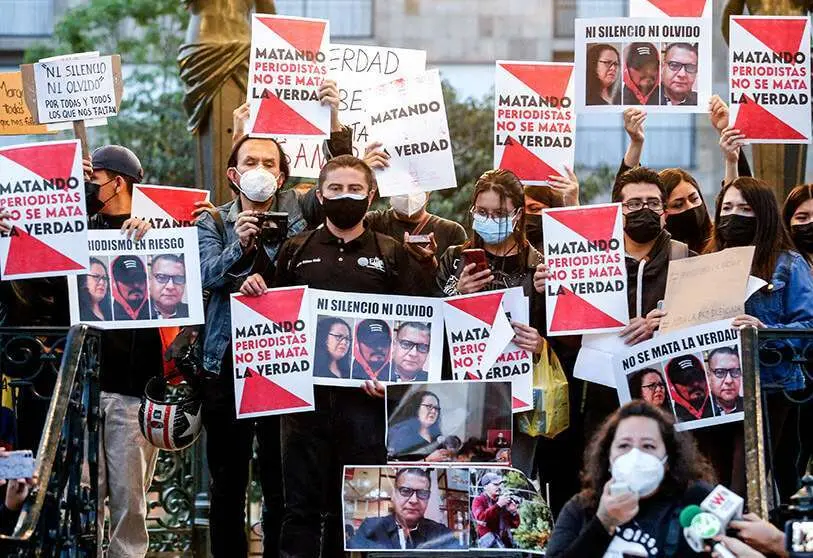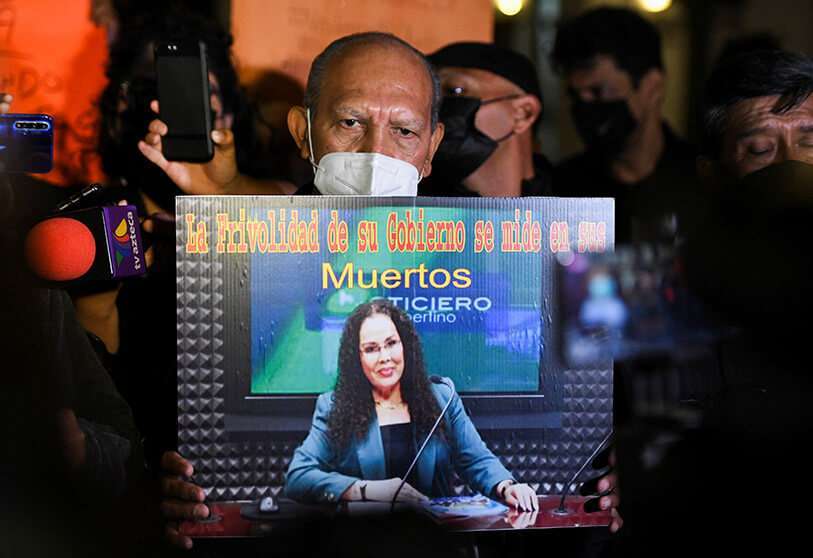Mexico, scene of first journalist murders of 2022

The fact that journalism is a risky profession is not unknown. Journalists and media professionals continue to risk their lives in order to report and tell what is happening. As the "watchdog" of power, threats, attacks and assassinations are constantly reproduced, ultimately endangering the democratisation of societies.
The year 2022 has begun with three murders in one of the most dangerous countries in which to be a journalist. On 23 January, the lifeless body of Mexican journalist Lourdes Maldonado was found in her car in Tijuana. Two bullet wounds were found in the body, which would have ended her life.

This murder took place days after Maldonado had reported on her victory in a lawsuit she had filed with the company Primer Sistema Noticias, owned by the former governor of Baja California, Jaime Bonilla. This complaint was part of a legal process in which Lourdes had been immersed for six years due to unfair dismissal and outstanding payroll claims.
Aware of her risky situation, Maldonado had already intervened in 2019 in "la mañanera" of the president of Mexico, Andrés Manuel López Obrador, stating that she was coming there "to ask for support, help and labour justice, because I even fear for my life". In this regard, the reporter belonged to a special programme for journalists in Mexico, a programme that provides surveillance for journalists, but not on a permanent basis, and which is also hampered by a lack of both capacity and resources. Following her request, they proceeded to send her surveillance, which was neither sufficient nor permanent.

In addition to Maldonado's murder, six days earlier, on 17 January, photojournalist Alfonso Margarito Martínez Esquivel was killed after being shot twice near his home. Martínez had left his home to cover a homicide because of his extensive experience and knowledge of criminal and police matters. Alfonso worked for different media such as the newspaper Zeta or La Jornada de Baja California covering this type of events. According to the director of Zeta, Adela Navarro, to Reporters without Borders, "Alfonso had always had problems with the police because of the subjects he covered".
In addition, he himself confessed to feeling threatened by criminal groups in the area, and had even been threatened in the street, which is why he requested protection from the State of Baja California, a request that was not processed due to an administrative change.

In addition to these murders, another journalist who worked independently was also murdered. On 10 January, the body of José Luis Gamboa Arenas was found with multiple stab wounds several metres from his home in Veracruz. Gamboa wrote opinion pieces and was highly critical of state corruption, as well as repeatedly denouncing the links of the political class with organised crime groups.
His murder came after he published a video under the name "la guerra por la narcopolítica", a piece denouncing the increase in murders in Veracruz. Following the murder, the State Commission for the Attention and Protection of Journalists (CEAPP), has confessed that Gamboa had "no special protection".
Faced with this wave of murders of journalists, Mexico has mobilised. In more than thirty cities, both journalists and citizens have taken to the streets repudiating the violence to which the profession is subjected. The Mexican country continues to top the list of the "most dangerous countries" in which to work as a journalist, with dozens of murders every year and multiple attacks, something it is unable to shake off.

The fact that the Mexican country is at the top of this dramatic list almost constantly is due to the impunity that prevails in these murders, as 90% of these crimes are lost in the bureaucracy and corruption of the prosecutor's office. On the other hand, according to the Committee to Protect Journalists (CPJ), 138 journalists have been killed in Mexico since 1992, the year in which the deaths of media professionals began to be recorded.
These three murders are the first three names on a list that has already begun to be written. This year alone has almost reached half the number of Mexican journalists murdered, according to RSF's 2021 count, and ranks 143rd out of 180 countries in the World Press Freedom Index.
With these data, Mexico's current tools for the protection of journalists, namely the FEADLE and the protection mechanism for journalists, have already proven to be ineffective. The lack of alternatives and the social and political situation complicate the fact that there will be a change in the protection of journalists, which means that the murders of journalists in Mexico, as in the rest of the world, will continue to occur and that the profession will continue to be vilely beaten.
Less journalism means less democracy, a never-ending cycle, which, if the necessary measures are not taken, will continue to be damaged to the detriment of society as a whole.
Latin America Coordinator: José Antonio Sierra







